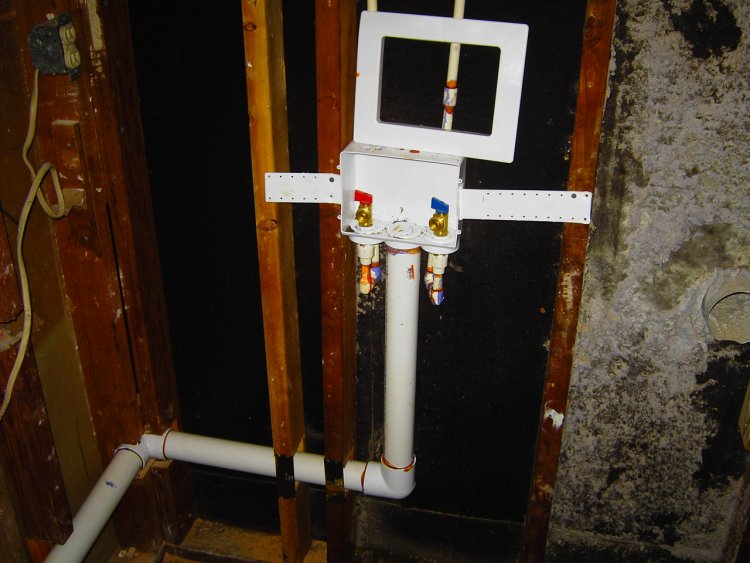

When the home was built, the standpipe was sized at 1 1/2 inches to handle the output of the washing machine. The STANDPIPE is the pipe the hose sits inside to drain. If the washing machine is new, and it is backing up during the spin cycle, but the machine you just replaced was draining with no problem, or you have tested the line with a water hose, then the problem is the stand pipe. Factor #2 - Did you recently get a new washing machine? The reason I ask is because newer washing machines have a higher output than those manufactured 10 or more years ago. Then test the performance of the washing machine. If so, the line needs to be cleaned out with a 3/8" drain cable. Factor #1 - Is there a clog in the line? Run a water hose in the standpipe and see if it backs up. There are many factors that come into play, however. The most important thing is to properly diagnose the problem. If the water is backing up from the standpipe then you obviously have a problem. ells, tees,) will cause the soap in the gray water to foam up which will cause the drain line to slowly back up. It also allows for a smooth transition into the drain line. The p-trap keeps sewer gas from coming back into the house. #5 Some plumbing installations installed without a p-trap will need to be changed. This option will be one of the more costly fixes, depending on the amount of line that needs to be changed. Your drain line will need to be changed to 2". With the newer washing machine discharge volume, the 1 1/2" pipes will not support the discharge. Older plumbing applications were installed using 1 1/2" piping. #4 Some situations will require that the drain pipe be increase in diameter. This allows for gravity to assist the drain. It is recommended that it be at least 36". #3 Some situations might require that you have to raise your drain pipe. #2 There is also a rubber cap that you attach to the drain pipe that fits around the drain hose tightly. The brass nipple will not corrode like a galvanized nipple. I recommend a 3/4" x 6" brass nipple, or a 1/2" x 6" brass nipple, depending on your specific situation. #1 As mentioned above, you can restrict the flow of the drain pipe. Here are a number of solutions, I hope that one of these will help you. This amount is far more than the garden hose test will submit the drain to. The problem with the new washing machines, is that they dump 20-22 gallons of water in 4-5 seconds.


 0 kommentar(er)
0 kommentar(er)
